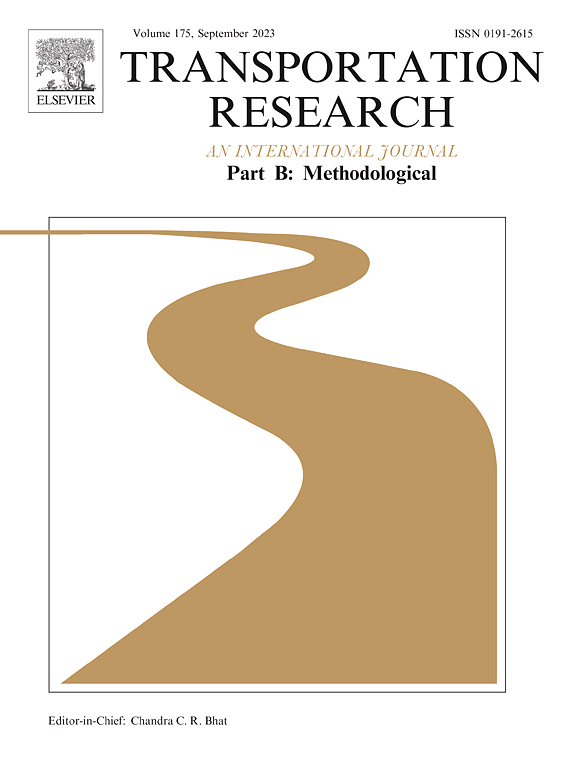有诱导需求的福利最优自行车网络扩展
IF 5.8
1区 工程技术
Q1 ECONOMICS
引用次数: 0
摘要
在本文中,我们确定了自行车网络的福利最优投资策略,同时考虑了在整个投资期内旅行时间节省和诱导需求的共同影响。本文对 Paulsen 和 Rich(2023 年)最近发表的固定需求扩张策略进行了扩展。考虑诱导需求要求我们能够表达网络的扩展如何通过旅行时间的变化影响需求,以及需求如何通过累积的健康和旅行时间的节省对净现值函数做出贡献。本文展示了如何通过需求和消费者剩余函数的近似值来逼近净现值函数,从而实现大规模优化。这一过程被表述为一连串跨越整个时期的二进制数学程序。我们将该方法应用于大哥本哈根地区的大规模自行车超级高速公路网络,以对其进行测试。结果表明,优化后的基础设施投资计划的效益成本比超过了 10,而且在优化过程中考虑到需求效应,社会净现值增加了 15%以上,同时还改变了投资网络的地理结构。本文强调了从动态角度而非依赖静态评估(这是实际规划中的主要做法)来制定基础设施投资战略的重要性。本文章由计算机程序翻译,如有差异,请以英文原文为准。
Welfare optimal bicycle network expansions with induced demand
In this paper, we determine a welfare-optimal investment strategy for bicycle networks while considering the joint impact of travel time savings and induced demand throughout the investment horizon. The paper extends an expansion strategy with fixed demand recently published in Paulsen and Rich (2023). Accommodating induced demand requires that we can express how expansions of the network affect demand through changes in travel time, and also how demand contributes to the net present value function due to accumulated health and travel time savings. It is shown how the net present value function can be approximated through approximations of demand and consumer surplus functions enabling optimisation on a large scale. This process is formulated as a sequence of binary mathematical programs spanning the entire period. We test the approach by applying it to a large-scale network of Cycle Superhighways for Greater Copenhagen. It is demonstrated that the optimised infrastructure investment plan renders benefit–cost ratios exceeding 10 and that accounting for demand effects in the optimisation increases the societal net present value by more than 15% while also changing the geographical structure of the invested network. The paper emphasises the significance of approaching infrastructure investment strategies from a dynamic perspective instead of relying on static evaluations, which is the predominant practice in practical planning.
求助全文
通过发布文献求助,成功后即可免费获取论文全文。
去求助
来源期刊
CiteScore
12.40
自引率
8.80%
发文量
143
审稿时长
14.1 weeks
期刊介绍:
Transportation Research: Part B publishes papers on all methodological aspects of the subject, particularly those that require mathematical analysis. The general theme of the journal is the development and solution of problems that are adequately motivated to deal with important aspects of the design and/or analysis of transportation systems. Areas covered include: traffic flow; design and analysis of transportation networks; control and scheduling; optimization; queuing theory; logistics; supply chains; development and application of statistical, econometric and mathematical models to address transportation problems; cost models; pricing and/or investment; traveler or shipper behavior; cost-benefit methodologies.

 求助内容:
求助内容: 应助结果提醒方式:
应助结果提醒方式:


